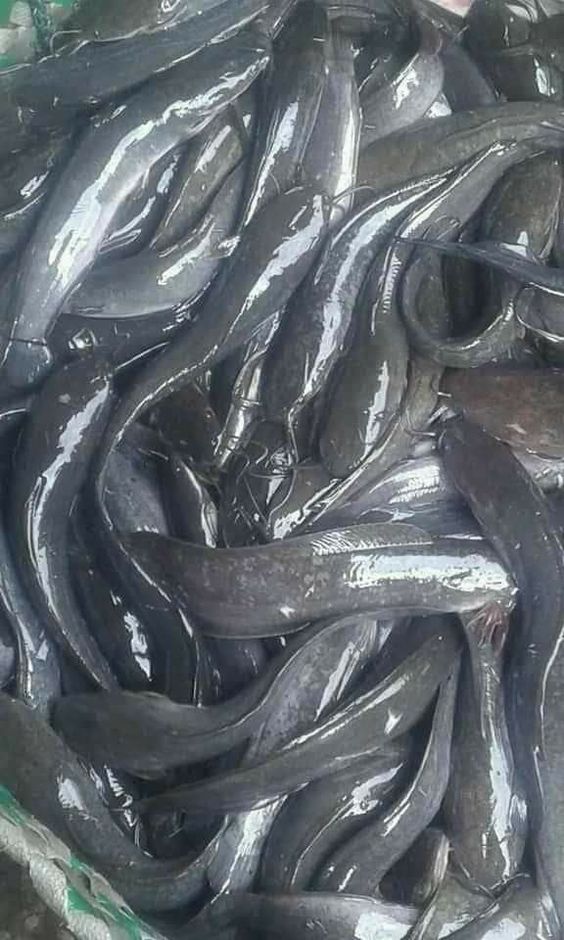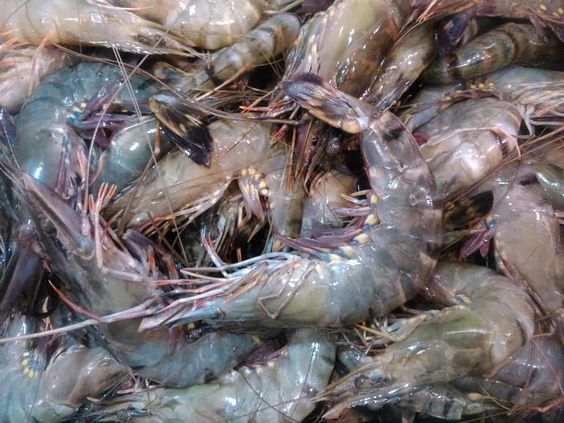The Alluring Allure of Snapper Fisheries: A Comprehensive Exploration
Snapper fisheries captivate the imagination. They conjure visions of vibrant coral reefs teeming with life, skilled anglers battling powerful fish, and the delectable rewards that grace our dinner plates. But beyond the romanticism lies a complex and dynamic industry that plays a vital role in the global seafood market and the livelihoods of countless communities. This comprehensive exploration delves into the world of snapper fisheries, examining their intricacies, their contributions, and the challenges they navigate.
Contents
- 1 Unveiling the Snapper: A Fish of Many Faces
- 2 A Bounty from the Deep: The Benefits of Snapper Fisheries
- 3 Guiding Principles: Objectives of a Sustainable Snapper Fishery
- 4 Charting a Course for Success: Ideas and Strategies
- 5 Navigating the Currents: Challenges and Considerations
- 6 Shaping the Future: Embracing Sustainable Practices
- 7 Beyond the Catch: Exploring Alternative Livelihoods
- 8 A Shared Responsibility: The Role of Consumers
- 9 A Glimmer of Hope: Success Stories and Inspiration
Unveiling the Snapper: A Fish of Many Faces
The term “snapper” encompasses a diverse family of fish within the Lutjanidae family. They are widely distributed across tropical and subtropical waters, inhabiting coral reefs, rocky outcrops, and sandy bottoms. Snappers boast a dazzling array of colors, ranging from fiery reds and yellows to subdued pinks and grays. Their body shapes vary from elongated and sleek to deep-bodied and robust. This remarkable diversity translates into a spectrum of flavors and textures, making them prized catches for both recreational and commercial fisheries.
A Bounty from the Deep: The Benefits of Snapper Fisheries
Snapper fisheries offer a multitude of benefits, impacting economies, societies, and even the environment:
- Economic Powerhouse: Snappers are commercially valuable fish, commanding premium prices in seafood markets worldwide. The fishing industry generates substantial revenue, supporting coastal communities and contributing to national economies.
- Food Security: Snapper fisheries provide a significant source of protein for millions of people globally. Their delicious flesh is a staple in many cultures, particularly in Southeast Asia and the Mediterranean.
- Recreational Allure: Snapper fishing is a beloved pastime for recreational anglers. The thrill of the fight and the satisfaction of landing a magnificent snapper fuel a thriving recreational fishing sector.
- Ecological Balance: Sustainable snapper fisheries can contribute to healthy marine ecosystems. By targeting specific species and practicing responsible fishing techniques, these fisheries can help maintain predator-prey relationships and promote biodiversity.
Guiding Principles: Objectives of a Sustainable Snapper Fishery
The long-term viability of snapper fisheries hinges on a set of well-defined objectives:
- Maintaining Stock Health: The primary objective is to ensure the health and sustainability of snapper populations. This requires effective stock assessment and management strategies that prevent overfishing.
- Minimizing Bycatch: Responsible fishing practices aim to minimize the capture of unintended species, such as undersized fish and ecologically important bycatch.
- Protecting Habitats: Healthy coral reefs and other marine habitats are crucial for snapper reproduction and survival. Sustainable fisheries prioritize the conservation of these fragile ecosystems.
- Responsible Gear Selection: Employing environmentally friendly fishing gear like hooks and traps minimizes damage to the seabed and reduces ghost fishing (lost or abandoned gear).
- Community Engagement: Collaboration with local fishing communities is essential for effective management and co-creation of sustainable fishing practices.
Charting a Course for Success: Ideas and Strategies
Achieving sustainability in snapper fisheries demands a multi-pronged approach:
- Science-Based Management: Implementing robust management measures informed by scientific data on population dynamics, spawning grounds, and habitat utilization is crucial.
- Catch Quotas and Limits: Setting catch quotas based on stock assessments can prevent overfishing and ensure population stability.
- Gear Restrictions: Implementing size and gear restrictions can help minimize bycatch and protect undersized fish.
- Marine Protected Areas: Creating marine protected areas (MPAs) provides safe havens for snapper populations to replenish, ultimately benefiting fisheries outside these zones.
- Technology Adoption: Utilizing technology like electronic monitoring and vessel tracking systems enhances data collection and enforcement of regulations.
- Market Incentives: Promoting eco-labels and rewarding responsible fishing practices can incentivize sustainable management.
- Consumer Awareness: Educating consumers about the importance of sustainable seafood choices can drive demand for responsibly sourced snapper.
Snapper fisheries face several challenges:
- Overfishing: Unregulated fishing practices and a growing demand for snapper can lead to overfishing, jeopardizing the long-term viability of the fishery.
- Habitat Degradation: Pollution, coastal development, and climate change can degrade coral reefs and other critical snapper habitats, impacting their populations.
- Illegal, Unreported, and Unregulated (IUU) Fishing: IUU fishing undermines conservation efforts and skews market competition. It requires robust international cooperation for effective control.
- Bycatch Reduction: Minimizing bycatch remains a challenge, requiring innovative gear design and fishing techniques.
- Balancing Interests: Striking a balance between commercial fishing needs, recreational fishing pursuits, and conservation objectives demands careful consideration.
Shaping the Future: Embracing Sustainable Practices
The future of snapper fisheries rests on a commitment to responsible practices. Here are some key suggestions:
-
Empower Local Communities: Engaging local fishing communities in data collection, co-management strategies, and alternative livelihoods fosters a sense of ownership and promotes responsible fishing practices.
-
Promote Collaborative Management: Collaboration among researchers, fishery managers, industry representatives, and environmental NGOs fosters a holistic approach to sustainable fishery management.
-
Education and Training: Educating fishers on sustainable practices, gear selection, and responsible bycatch handling is vital for long-term success.
-
Alternative Gear Development: Encouraging research and development of more selective fishing gear that minimizes bycatch can significantly improve sustainability.
-
Market Transformation: Supporting the development of sustainable seafood certification programs and educating consumers empowers them to make informed choices that incentivize responsible fishing practices.
Beyond the Catch: Exploring Alternative Livelihoods
Diversifying income opportunities for fishing communities can lessen pressure on snapper stocks. Here are some possibilities:
-
Ecotourism: Promoting responsible ecotourism ventures can generate income while fostering appreciation for the marine environment.
-
Aquaculture: Sustainable aquaculture practices can provide alternative sources of snapper, reducing pressure on wild populations.
-
Value-Added Products: Developing value-added products like smoked or marinated snapper can increase profitability and market reach for fishers.
Consumers play a vital role in promoting sustainable snapper fisheries. By making informed choices, they can exert a powerful influence:
-
Seek Eco-Labels: Look for seafood certified by sustainable fishery organizations like the Marine Stewardship Council (MSC).
-
Ask Questions: Engage with retailers and restaurants about the origin and sustainability practices behind the snapper they sell.
-
Variety is Key: Explore alternative, sustainably sourced seafood options to lessen dependence on snapper.
-
Reduce Waste: Minimize food waste by purchasing only what you need and utilizing leftovers creatively.
A Glimmer of Hope: Success Stories and Inspiration
Despite the challenges, success stories offer hope for the future of snapper fisheries. Collaborative management efforts, coupled with innovative fishing techniques and consumer awareness campaigns, have demonstrated the potential for sustainable fisheries.
-
The South Atlantic Red Snapper Fishery: A prime example of successful management. Through catch quotas, gear restrictions, and strong enforcement, the fishery has rebuilt red snapper stocks to healthy levels.
-
The Caribbean Spiny Lobster Fishery: This fishery showcases the power of co-management. Local communities work closely with fishery managers to implement sustainable practices, ensuring the long-term viability of the fishery.






